Did you know that nearly one out of three cats in the U.S. misses important booster shots—and that this gap puts not just your beloved feline, but the entire pet community, at risk of deadly infectious diseases? If you're unsure about what vaccinations your cat needs and when, you're not alone. But making the right choices on your cat's vaccine schedule could be the most crucial step in keeping them healthy, happy, and protected—for life.
Shocking Feline Fact: Why Cat Vaccination Rates Matter for Every Pet Owner
Preventable diseases like feline leukemia virus, feline viral rhinotracheitis, and rabies still threaten cats today—even in well-loved indoor cat households. Recent studies reveal that disease outbreaks are more likely when community vaccination rates drop below 70%. This means every cat owner’s decision impacts not just their own furry friend, but every cat in their neighborhood. With more pets living longer and having broader contact with humans and other animals, the risk for highly contagious outbreaks climbs higher when vaccines are skipped or delayed.
Cat vaccines are not just a personal health measure, but a communal responsibility. That’s why understanding what vaccinations do cats need and when—plus completing the recommended vaccine schedule—is a must for responsible cat caregivers. By keeping up-to-date with your cat vaccination regimen, you provide lifelong protection against infectious disease and help keep all local pets safe.
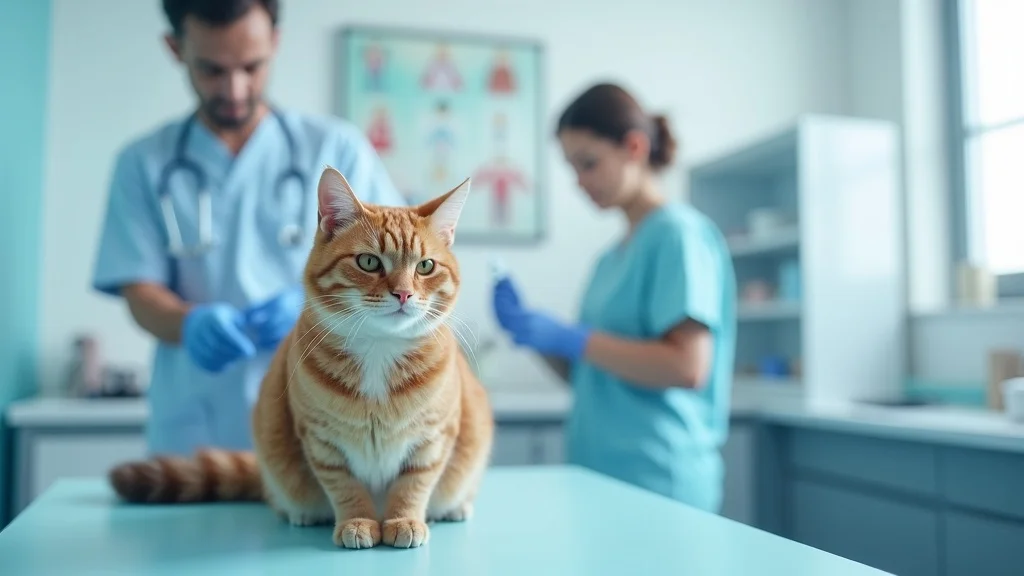
What You’ll Learn in This Guide to What Vaccinations Do Cats Need and When
- How to identify essential cat vaccinations and the ideal vaccine schedule
- Differences between core and non-core cat vaccines
- Current cat vaccination laws every pet owner should know
- Risks, side effects, and safety considerations of cat vaccines
- Practical advice tailored to both indoor and outdoor cats
Understanding What Vaccinations Do Cats Need and When: The Basics of Cat Vaccination
Defining Cat Vaccination, Cat Vaccinations, and Cat Vaccine Programs
Cat vaccinations are shots that prepare your cat’s immune system to fight off specific, highly contagious, and often life-threatening diseases. Veterinarians typically follow national or international guidelines to build a tailored cat vaccine program that starts as early as six to eight weeks of age and continues into adulthood with regular boosters. A well-designed cat vaccination schedule features core vaccines—considered essential for every cat—and non-core vaccines, chosen based on your cat’s individual risk.
These vaccine programs aim to prevent illnesses like feline distemper and upper respiratory infections, as well as deadly threats such as rabies and leukemia virus. A solid vaccine schedule is the foundation of cat health and keeps your cat healthy even in multi-cat households or communities with variable vaccination rates. Timely cat vaccinations also help minimize financial costs long-term, since preventing disease is much more affordable than treating it.
Why Vaccinating Cats is Essential: Protecting Your Feline and Community
Cat vaccines don’t just protect the cat receiving the shot—they also prevent disease spread among cats, other pets, and even humans. Vaccinating cats halts transmission of viruses that otherwise lead to outbreaks of upper respiratory infection, feline leukemia, rabies, and more. Gaps in a cat vaccine schedule increase the odds of life-threatening illnesses that are difficult or impossible to treat.
"Regular cat vaccinations are the cornerstone of feline preventative health care. Skipping just one booster can put your pet—and other cats—at risk." – Dr. Emma Patel, DVM
Continuing cat vaccinations throughout your pet's life—even after kittenhood—ensures robust, long-term immunity. Communities with high rates of cat vaccination also see fewer veterinary emergencies related to contagious disease and fewer public health scares.
Getting to Know Core Vaccines for Cats: What Vaccinations Do Cats Need and When
The 4 Core Vaccines: FVRCP, Rabies Vaccine, Feline Leukemia Virus, and Their Roles in Cat Vaccination
The recommended core vaccines for all cats are the FVRCP vaccine, the rabies vaccine, and, in most cases for kittens and cats at risk, the feline leukemia virus (FeLV) vaccine. These vaccines form the backbone of the cat vaccine schedule, as they target viruses that are widespread, highly contagious, and capable of causing severe disease.
- FVRCP (Feline Viral Rhinotracheitis, Calicivirus, Panleukopenia)—protects against three dangerous feline diseases, including deadly feline panleukopenia (feline distemper) and two causes of respiratory infections.
- Rabies vaccine—protects against rabies, a zoonotic virus that is required by law in most regions because it can be fatal to humans.
- Feline leukemia virus (FeLV) vaccine—recommended for all kittens and any adult cat that goes outdoors or is exposed to other cats.
- Other region-specific core vaccines may be recommended depending on local threats.
The cat vaccine schedule for these core vaccines often begins when kittens are 6 to 8 weeks old, with several boosters until 16 weeks, followed by regular boosters throughout adulthood. Cats that travel, attend boarding facilities, or engage with multiple cats may benefit from region- or situation-specific vaccines as part of their individualized program.

Feline Viral Rhinotracheitis: Critical Cat Vaccine Timing
Feline viral rhinotracheitis is a common upper respiratory infection responsible for sneezing, nasal discharge, and potentially serious complications in kittens, adults, and even vaccinated cats if boosters are missed. The FVRCP vaccine guards against this and two other deadly viruses. To ensure immunity takes root, the first shot usually occurs at six to eight weeks of age, with additional shots every three to four weeks until 16–20 weeks of age.
Following the primary puppy series, cats need their first FVRCP booster at one year of age, then every 1–3 years depending on vet recommendations, the cat’s age, lifestyle, and regional risks. Keeping on track with booster shots means your cat’s immune system is always primed to fight highly contagious respiratory infection and panleukopenia. Skipping boosters, even once, can leave immunity gaps.
Vaccine Schedule and Core Vaccines: When to Start and Booster Timing
The cat vaccination schedule begins with your vet recommending the best start time—usually at six to eight weeks old for kittens. These early shots are followed by boosters at regular intervals, finalized with annual or triennial shots for adult cats. Certain vaccines—like rabies or FeLV—might be set on tighter or looser intervals based on local laws, the age of your adult cat, or unique household risks. Keeping both schedules and core vaccines current is vital for your cat’s lifetime protection.
While core cat vaccines are non-negotiable for both indoor and outdoor cats, your veterinarian will help tailor the exact vaccine schedule based on overall cat health, immune status, and environmental exposures. The goal is always to keep every cat healthy and safe through all life stages.
Non-Core Vaccinations: What Vaccinations Do Cats Need and When for Special Cases
Non-Core Cat Vaccines: Bordetella, Chlamydia, and More
Non-core vaccines are tailored to the unique risks of your cat’s circumstances. If your feline visits boarding facilities, shelters, or frequently interacts with unknown cats, your vet may recommend vaccines for diseases like Bordetella bronchiseptica (kennel cough), Chlamydia felis (another cause of upper respiratory infection), or others based on your area’s infectious disease threats. These vaccines are generally only advised for cats at higher exposure risk.
Talk to your vet if your cat’s lifestyle changes, such as frequent travel or introduction of a new feline housemate. Adapting your cat vaccination program for special cases keeps both household pets and the wider pet community healthier, especially when highly contagious diseases can circulate in crowded environments.
Do Indoor Cats Need Vaccines? Recommendations for Indoor Cat Vaccination
Many pet owners assume their strictly indoor cats don’t need to stay current with cat vaccination schedules, but that’s a risky myth. Infectious agents like viruses and bacteria can enter your home on clothing, shoes, or shared objects—sometimes surviving for hours or days. Even if an indoor cat never roams outdoors, vaccines are needed as part of basic cat health protection.
"Even strictly indoor cats aren’t immune to infectious diseases; owners might inadvertently bring viruses indoors on their clothes or belongings." – Dr. Leo King, Veterinary Immunologist
Vets recommend all indoor cats follow the core vaccine schedule—including FVRCP and rabies—while non-core vaccines are often not necessary unless special circumstances arise, like exposure to other cats or travel. The safest indoor cat is a vaccinated one!
Cat Vaccination Schedule: What Vaccinations Do Cats Need and When, from Kitten to Adult Cat
| Age of Cat | Type of Vaccine | Recommended Frequency | Core or Non-Core |
|---|---|---|---|
| 6–8 weeks | FVRCP (feline viral rhinotracheitis, calicivirus, panleukopenia) | Every 3–4 weeks until 16–20 weeks old | Core |
| 8–12 weeks | Feline leukemia virus (FeLV) | 2 doses, 3–4 weeks apart; especially if at risk | Core (for kittens), Non-core (for adults) |
| 12–16 weeks | Rabies vaccine | Once at 12–16 weeks, then by law | Core |
| 1 year | FVRCP, Rabies, FeLV (if at risk) | Booster after initial series | Core |
| Adult Cat (1–3 years, ongoing) | FVRCP, Rabies, FeLV (if at risk), Non-core options (Bordetella, Chlamydia, etc.) | Every 1–3 years, as recommended | Core and Non-Core |
Kitten Vaccine Schedule: First Shots and Early Boosters
Kittens receive their first vaccinations at 6–8 weeks of age. The early weeks are critical, as kittens are highly susceptible to infectious disease. The recommended schedule includes a series of FVRCP vaccines every few weeks, plus the feline leukemia virus vaccine for those at risk, especially if the mother cat’s status is unknown. By the time your kitten is 12–16 weeks old, they should also receive their first rabies vaccine, which is legally required in most areas.
Booster shots are given to reinforce immunity; these are crucial because waning protection can leave even a healthy kitten at risk for upper respiratory infections or more severe viral illness. Scheduling all boosters as your vet recommends is the best way to set your kitten up for lifelong health.
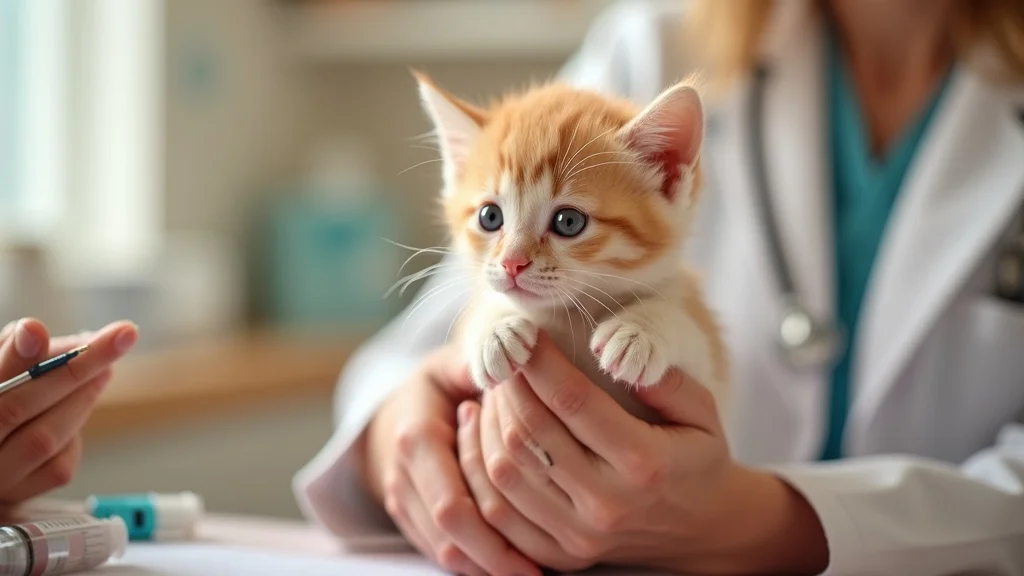
Adult Cat Vaccine Schedule: Annual and Triennial Boosters
As your kitten matures into an adult cat, your veterinarian will shift to a booster schedule to maintain immunity. For most adult cats, the FVRCP vaccine is repeated at one year, then every three years; rabies is boosted based on local regulations—often annually or triennially. The feline leukemia vaccine (FeLV) is continued yearly for outdoor or at-risk cats.
Partner with your vet to support cat health by following the ideal vaccination schedule for your adult cat. Regular boosters keep your cat healthy, and timely updates protect against contagious disease outbreaks in your area.
Legal Requirements: What Vaccinations Do Cats Need and When as Required by Law
Rabies Vaccine and Other Cat Vaccine Rules in Different States
The rabies vaccine is the only vaccine nearly all United States jurisdictions legally require for cats. Some areas also have additional vaccine requirements or recommendations based on localized outbreaks. Rabies not only threatens pets but public safety, making it the most heavily regulated cat vaccine.
- Which vaccines are required by law for cats
- How vaccine laws differ by locality
Always confirm with your local veterinarian and animal control office for updated, region-specific guidance. Rabies vaccine schedules can differ by state (annual versus three-year protocols), and cats missing necessary vaccines could face legal penalties or be barred from boarding or grooming facilities.
Understanding Cat Vaccination Side Effects and Safety
Common Cat Vaccine Side Effects: Mild to Serious Reactions
Cat vaccines are very safe, but as with any medical procedure, they can carry risk of side effects. The most common side effects are mild and short-lived, including temporary soreness at the injection site, lethargy, low fever, or decreased appetite. Rarely, cats can experience moderate to severe reactions, such as vomiting, facial swelling, difficulty breathing, or collapse. Immediate veterinary attention is required if any of these signs appear.
Your vet will walk you through the expected side effects based on the vaccine and your cat’s health. The benefits of vaccination far outweigh the rare risks: protecting your cat from deadly illness while helping avoid outbreaks in multi-cat homes and neighborhoods.
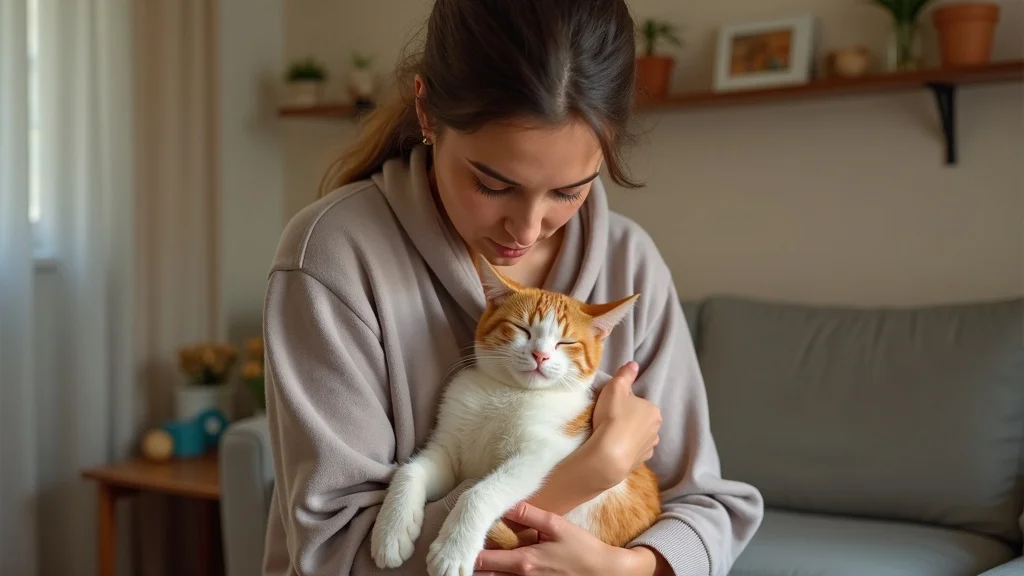
How to Minimize Discomfort and Monitor Post-Vaccination
To help your cat recover comfortably after a vaccination, ensure they have a quiet, cozy spot at home. Keep an eye on your cat for at least 24–48 hours after shots, especially for signs of pain, swelling, excessive fatigue, or trouble breathing. Encourage gentle play and allow your cat to rest.
"Serious side effects are rare, but prompt veterinary care is vital if you notice swelling, vomiting, or lethargy after any cat vaccination." – Dr. Alicia Mendez, Feline Specialist
If your cat has experienced severe vaccine side effects before, notify your vet so they can adjust future vaccinations as needed. Timely reporting and individualized planning minimize risk for every cat.
What Vaccinations Do Cats Need and When: Special Considerations for Indoor Cat vs. Outdoor Cat
Tailoring Cat Vaccination Choices to Your Cat’s Lifestyle
- Vaccination protocols for strictly indoor cats
- Increased risk and additional cat vaccines for outdoor cats
Indoor cats usually only need the basic core vaccines (FVRCP and rabies); outdoor cats face higher risk and often need more frequent boosters and additional protection such as FeLV and—depending on their exposure—other non-core vaccines. The more an adult cat interacts with unknown cats, wildlife, or spends time in multi-cat environments, the greater the need for full vaccine coverage.
Discuss lifestyle specifics with your vet each year to keep your cat healthy and to update the vaccination plan as needed. Health, age, local disease threats, and living arrangements all matter when building a personalized cat vaccination schedule.
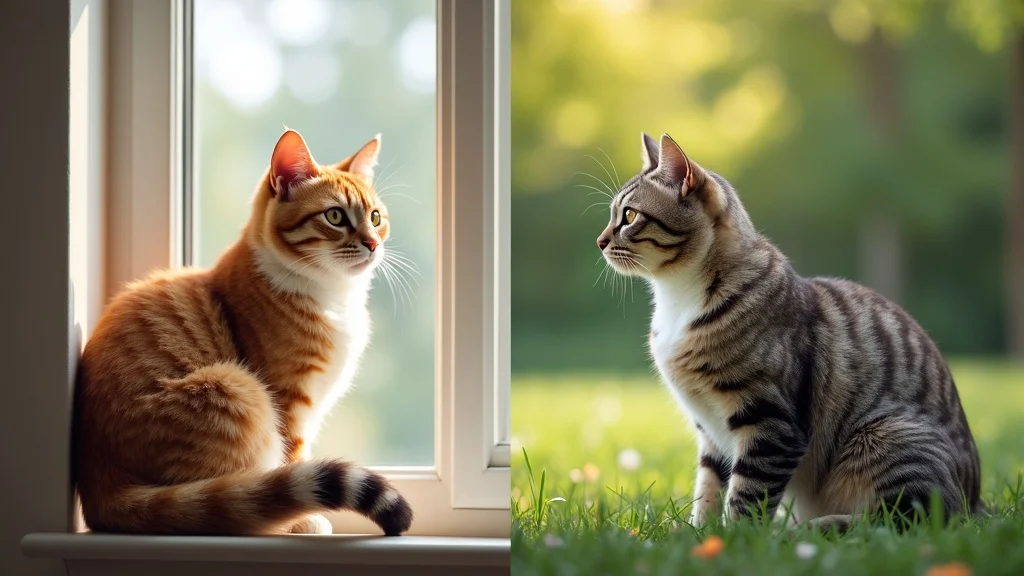
What Vaccinations Do Cats Need and When: Modern Best Practices and Recent Research
Modern recommendations for cat vaccine schedules are based on the latest research into feline immunology, risks, and vaccine safety. Today, most veterinarians propose starting vaccinations early, customizing cat vaccine boosters by lifestyle, and using combination shots (like FVRCP) to limit stress and visits.
Studies show properly followed vaccine schedules cut down significantly on upper respiratory diseases, viral shedding, and the chances of outbreaks. Routine reviews with your veterinarian will ensure your adult cat’s protection matches their age, health, and local disease threats, all while minimizing unnecessary vaccination and maximizing cat health.
Most Common Misconceptions About Cat Vaccination Schedules
- Vaccines aren’t just for kittens
- Indoor cats are always safe
- Core and non-core vaccines are all optional
- One missed booster doesn’t matter
The truth: Every cat—kitten or adult cat, indoor cat or outdoor—needs routine core vaccines to stay healthy and keep infectious disease at bay. Skipping a booster can leave immunity gaps. Tailoring cat vaccinations is about weighing real risks, not just convenience.
What Vaccinations Do Cats Need and When: A Video Guide
Watch: Cat Vaccine Schedule and Administration Explained
Don’t miss this friendly, visual walk-through of the complete cat vaccine schedule—see how easy it is to keep your cat protected, with advice for kittens, adult cats, and boosters.
People Also Ask: What Vaccinations Do Cats Need and When?
What vaccines are necessary for cats?
Comprehensive overview of required core and non-core vaccines at different cat life stages
Every cat should get the core vaccines: FVRCP (for feline viral rhinotracheitis, calicivirus, and panleukopenia), rabies, and—especially for kittens and outdoor cats—feline leukemia virus (FeLV). Non-core vaccines, like Bordetella and Chlamydia, are given if your cat's lifestyle or regional risks require. Kittens start vaccinations at 6–8 weeks, continue to 16–20 weeks, and then transition to a booster schedule for adults.
What vaccinations do indoor cats need?
Tailored vaccine recommendations for strictly indoor cats, including core vaccine schedule and optional non-core vaccines
All indoor cats should still receive core vaccines: the FVRCP vaccine and rabies vaccine (the latter often required by law). Non-core vaccines are usually skipped unless your indoor cat faces special situations, like travel, exposure to new cats, or stays in boarding facilities. Annual vet consultations ensure your indoor cat gets only the vaccinations needed to keep them healthy.
What is the recommended schedule for cat vaccines?
A clear breakdown of timelines and ages for optimal cat vaccination
Start FVRCP at 6–8 weeks old, boosting every 3–4 weeks until 16–20 weeks. Add FeLV for kittens and at-risk cats at 8–12 weeks with a second dose in 3–4 weeks. Rabies is usually given once at 12–16 weeks of age. First-year boosters for all vaccines are key, then move to annual or triennial updates based on your vet’s advice and local law.
What is the 3 2 1 rule for cat vaccines?
Explanation of the '3 2 1 rule' for cat vaccine timing and its application for kittens and adult cats
The '3 2 1 rule' means your kitten gets their core vaccines at three different times: the first shot at 6–8 weeks, a second shot 3–4 weeks later, and a third shot at or after 16 weeks, with a booster one year later. Then, triennial (every three years) or annual boosters are given in adulthood, depending on your vet’s guidance and product used.
Hear from real pet parents as they discuss the peace of mind, improved cat health, and unexpected side effects from keeping cats up-to-date with vaccine schedules. These stories reveal why staying current on what vaccinations do cats need and when is the best decision for any family.
Frequently Asked Questions About What Vaccinations Do Cats Need and When
-
Can my cat have an allergic vaccination reaction?
Yes, severe reactions are rare but possible. Watch for swelling, vomiting, or fatigue; contact your vet immediately with any concerns about side effects. -
How soon can kittens go outside after cat vaccines?
Keep kittens indoors until at least a week after their final booster, usually around 16–20 weeks, to ensure their immune system is fully protected. -
Do elderly cats still need vaccinations?
Yes, older cats benefit from core vaccines, though your vet may adjust the schedule based on health status and lifestyle. -
Is titer testing a substitute for cat vaccinations?
Titer tests can help check immunity for some diseases but don’t replace the need for rabies vaccines or universally reduce vaccination needs. -
Will pet insurance cover cat vaccination costs?
Some wellness plans cover routine vaccinations, but standard accident and illness policies typically do not. Review your pet insurance details.
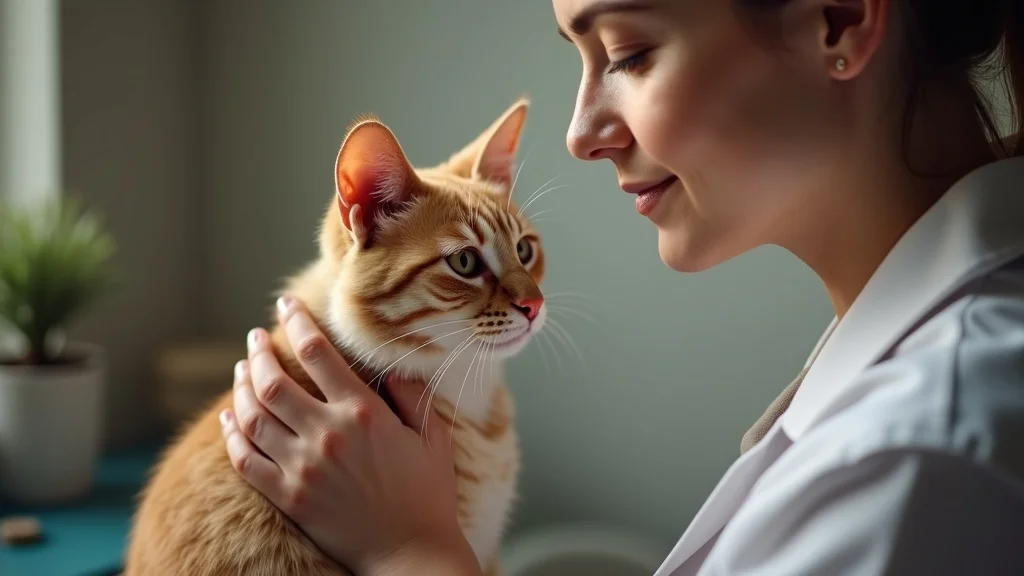
Key Takeaways on What Vaccinations Do Cats Need and When
- Every cat—indoor or outdoor—needs a personalized cat vaccination schedule
- Follow the core cat vaccines schedule recommended by vets
- Consult your vet to adapt vaccination to your cat’s health and lifestyle
- Stay up-to-date with legal requirements in your area
- Monitor cats after vaccination for any side effects
Ready to Be a Proactive Pet Parent? Subscribe for the Latest Cat Care Tips
Love pets as much as we do? Join our monthly newsletter for tail-wagging tips, adorable stories, and smart pet care hacks. 🐾 Subscribe now — it's paws-itively free!
Ensuring your cat receives the appropriate vaccinations at the right times is crucial for their health and the well-being of the broader pet community. For a detailed breakdown of the essential vaccines and their recommended schedules, consider consulting the article “Kitten Vaccination Schedule and Costs.” This resource offers comprehensive insights into core and non-core vaccines, along with associated costs. Additionally, “Cat Vaccinations: What Vaccines Do Cats Need?” provides valuable information on the importance of vaccinations and answers common questions about feline immunization. By exploring these resources, you’ll be better equipped to make informed decisions about your cat’s vaccination needs.
 Add Row
Add Row  Add
Add 




Write A Comment